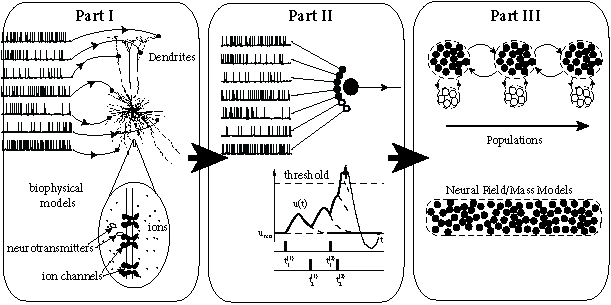Part III Networks of Neurons and Population Activity

The organization of this book follows a path of successive simplifications so as to ultimately bridge scales from micrometers to centimeters, from single cells to cognition. The first two parts focused on isolated neurons. In Part I, we took as our starting point a rather detailed biophysical description of a neuron, exemplified by the Hodgkin-Huxley model and variants thereof. Working along from Part I to Part II, this description of a neuron was simplified to a point neuron of the integrate-and-fire type.
Part III is the cornerstone for the transition from single neurons to macroscopic phenomena and, ultimately, forms the basis of the cognitive phenomena discussed in Part IV. Chapter 12 starts the transition from single neurons to populations of neurons; the mathematical methods for this transition and the major dynamic phenomena in populations of neurons are explained in Chapter 13 and 14. Because of their complexity, the mathematical equations for the dynamics of populations of neurons are often simplified to so-called rate models. The limitations of the simplification step are highlighted in Chapter 15. The simplified rate equations will then be used for the analysis of a few selected large-scale phenomena in Part IV.